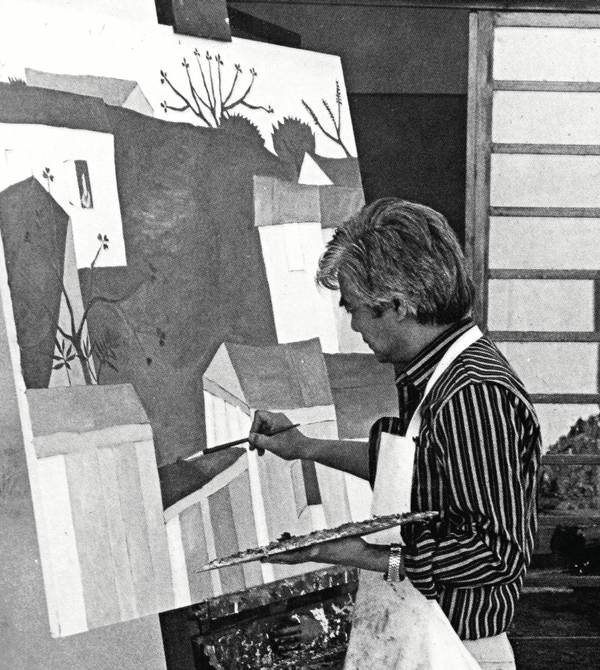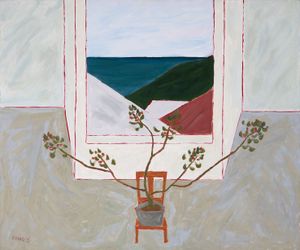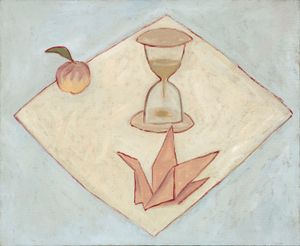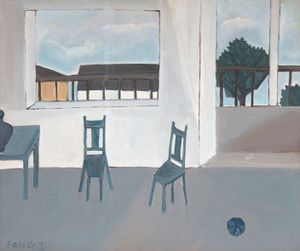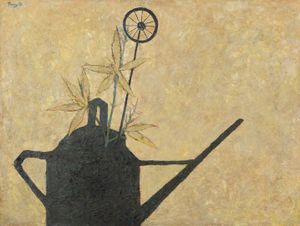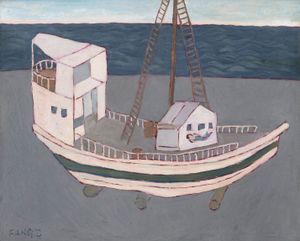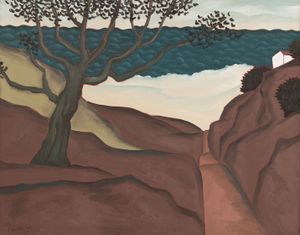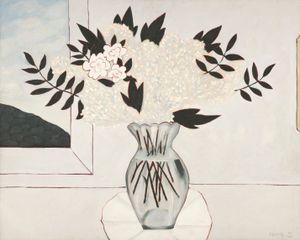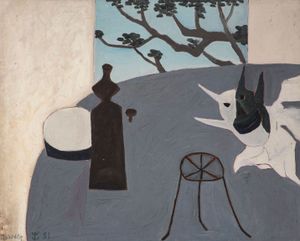Chen Kong Fang was born in 1931 in Tung Cheng, Anhui province, in China. He demonstrated an inclination for drawing since childhood and, as a teenager, he studied watercolor and sumi-e – a technique from Chinese origin which combines ink painting and calligraphy. After the death of his father – a distinguished politician and engineer – Fang settled in Brazil with his family, in 1951, following a period of harsh difficulties in his homeland, where he had experienced the horrors of the the war. In the mid-1950s in São Paulo, Fang studied Western painting with Yoshiya Takaoka, a Japanese artist who had attended the Académie de la Grande Chaumière, in Paris. During his apprenticeship years, Fang was inclined to absorb references from Western painting’s realist and naturalist styles in his landscapes, portraits and still lifes.
From the 1960s on, however, he began pursuing his own artistic path, and developed an original style rooted in aspects of Chinese art that became increasingly evident as he reached his maturity as a painter. However, this journey was not without setbacks and detours. For a brief period, in the mid-1960s, Fang produced works that leaned towards geometric abstraction, an experiment that proved unsuccessful and led him back onto the path of figuration. Fang’s paintings display his fresh and experimental outlook in art, and the way in which he honored the tradition of Chinese painting, especially its spiritual quality. They feature recurring elements such as house interior containing few objects; twisted branches and trees moved by the wind; theatrical compositions where things seem to be animated; plays with scale and framing that operate a subtle deformation in objects, endowing them with a lively and human character. Fang sought to capture the physiognomic and spiritual characteristics of things, revealing mysterious aspects of the subjects he painted.
The deep interiority of his work, the importance of empty spaces, and the calligraphic style bring it closer not only to traditional Chinese painting but also to the modern and subtle work of San Yu (1901-1966), a Chinese master who shares with Fang the experience of life in the West and the search for an original language. Fang's originality, together with the spiritual quality of his painting, earned the artist great prestige from important collectors, including psychoanalyst, poet, and art critic Theon Spanudis - one of the major collectors of works by Volpi and Eleonore Koch - who organized the group show Arte Transcendente, held at Museu de Arte Moderna de São Paulo - MAM SP (1981), in which Fang took part. It was in this context, as part of Spanudis' circle, that Fang's work became part of collections such as those of MAM-SP and Museu de Arte Contemporânea da USP – MAC USP.
During the most active decades of his career - between the 1960s and 1980s - Fang took part in group exhibitions such as the Art Salons 1º Salão de Arte Moderna do Distrito Federal (1964); 1º Salão de Arte Contemporânea de São Paulo (1969); as well as various exhibitions focusing on the work of Brazilian immigrant artists or artists of Asian origin, such as Exposição dos pintores nipo-brasileiros (1996); Takaoka e seus discípulos (1986); and Imigrantes nas artes plásticas de São Paulo (1976), all held at MASP, a fact that points to Fang’s relevance in the context of artistic production made in Brazil by foreign artists. In recent decades, his work has remained removed from the institutional circuit. In 1994, his last retrospective was presented at the Museum de Arte Contemporânea in Americana, a town in the state of São Paulo, and in 2018 the Pinacoteca de São Paulo features a group of works by Fang in a group show that also included works by Amadeo Lorenzato, Eleonore Koch and various contemporary artists.
Fang took part in the Panorama de Arte Atual Brasileira in 1978 at MAM SP, as well as other group shows. His first solo show took place in 1959 at the Clube dos Artistas Plásticos, in São Paulo, and throughout his career he had several other solo shows at venues such as Galeria Bonino, in Rio de Janeiro, and F. Konning Art Gallery, in Schleswig, Germany. In 1984, Dan Galeria in São Paulo published a book about Fang with a text by Theon Spanudis. Fang's work is part of several important private collections, as well as public collections such as the Museu de Arte Contemporânea da USP; Pinacoteca do Estado de São Paulo and Museu de Arte Moderna de São Paulo, among others.
